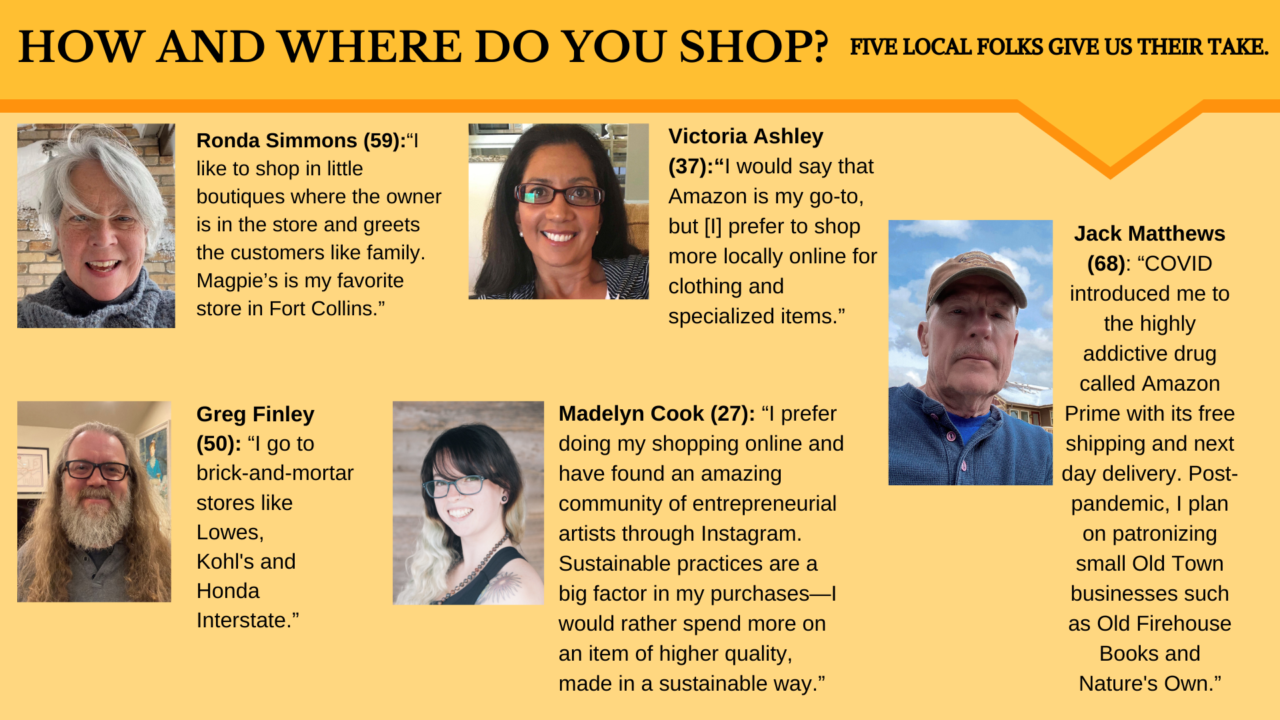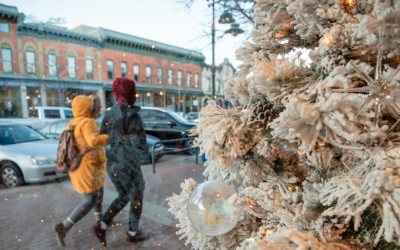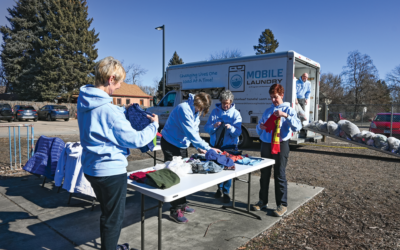By Kristin Owens
Looking for cute summer sandals? Dansko’s Lindsay style, size 8½ in red leather? No need to drive around endlessly searching shoe stores. Punch these parameters into Zappo’s handy-dandy website or convenient app and there they are, looking all cute and ready for picnics, concerts and dining al fresco. Factor in complimentary shipping and hassle-free returns, and you’ll get them in a matter of days. Easy.
Let’s face it, the pandemic pushed everyone online. Items (both essential and non) found themselves expectantly waiting on doorsteps, ready for consumption. And if businesses didn’t offer a shipping component, they delivered. Groceries? 2 x 4’s? Sushi? No problem. We got nearly instant gratification. These practices certainly helped with social distancing measures and kept us healthy, but does this mean local, in-person shopping is now defunct?
Thanks a lot, COVID
It’s been a tough ride. In 2020, many brick and mortar stores took a big financial gut punch with vanishing sales revenue. Collectively, we experienced job losses and higher unemployment. Also, store closures. It wasn’t just small, family-run or independent shops; many types of retail took a hit (though, admittedly, the large box stores did quite well). Surprisingly, or not, liquor store sales soared, but that’s another story.

However, Josh Birks, director of economic health and redevelopment for the City of Fort Collins, says foreclosures don’t mean retail is on its way out. It simply means the landlords need to sell those properties to pay the bank. The next owner may make changes, but typically, existing leases with individual stores will be honored. In the end, “we’re still going to spend money,” he says. He’s right. Already, local retail revenues are up. Vanessa Kroeger with the Fort Collins Downtown Development Authority says store owners are “cautiously optimistic.” Data from the Colorado State Department of Revenue shows a 14.7 percent increase in retail sales for Larimer County in February 2021 over February 2019. With the warm summer months and opening travel restrictions, sale revenues are expected to continue to increase. Collaborations with restaurants and breweries and reinstating local festivals and events all add to the foot traffic.
It’s an economic dilemma: spend money via the internet or in-person. Yes, online stores pull revenue away from local businesses, but it’s more than that. If you know what you want, the item is relatively easy to find and purchase. Just ask Amazon.
But in-person shopping connotates browsing. Looking at options. Trying things on. Touching. Even sniffing. Does that lemon-scented candle smell like fresh-cut lemons or lemon pie? It’s hard to tell online. In-person shopping offers better-informed decisions—whereas online you’re at the mercy of self-verified buyers for feedback. Just because the Dansko sandals look cute, doesn’t mean they won’t tortuously rub across your pinky toes once delivered.
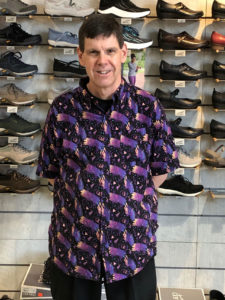 “Customers need to say, ‘Wow,’” says Greg Augustine, owner of Brown’s Shoe Fit in Fort Collins. “You can’t get that on the internet.”
“Customers need to say, ‘Wow,’” says Greg Augustine, owner of Brown’s Shoe Fit in Fort Collins. “You can’t get that on the internet.”
During COVID, it wasn’t just about shopping local that helped businesses, but also shopping small. Manager Tara Furey says even though Old Firehouse Books has a tiny footprint, “We still carry 30,000 titles, just fewer copies. Customers are always surprised about the diverse selection.” Plus, people like to browse. Knowledgeable staff add to the purchase experience. They can recommend a book from an unknown author and discuss current title releases, not just ring-up the purchase. It’s the service that keeps people returning and spending money. When you buy online, all of the extras go missing.
“We’re an educational place,” Augustine explains. Long, short, wide, narrow and comfort are all critical factors when buying shoes. Everyone’s foot is different and e-commerce sites can’t let you compare sizes, unless you buy multiple pairs and send back those that don’t make the grade. Even with free returns and shipping, that’s a pain.
Due to COVID, customers needed opportunities to look at products from the safety of their own homes. Augustine launched an online presence from scratch for customers to view current inventory. They also offered a delivery service. It all worked.
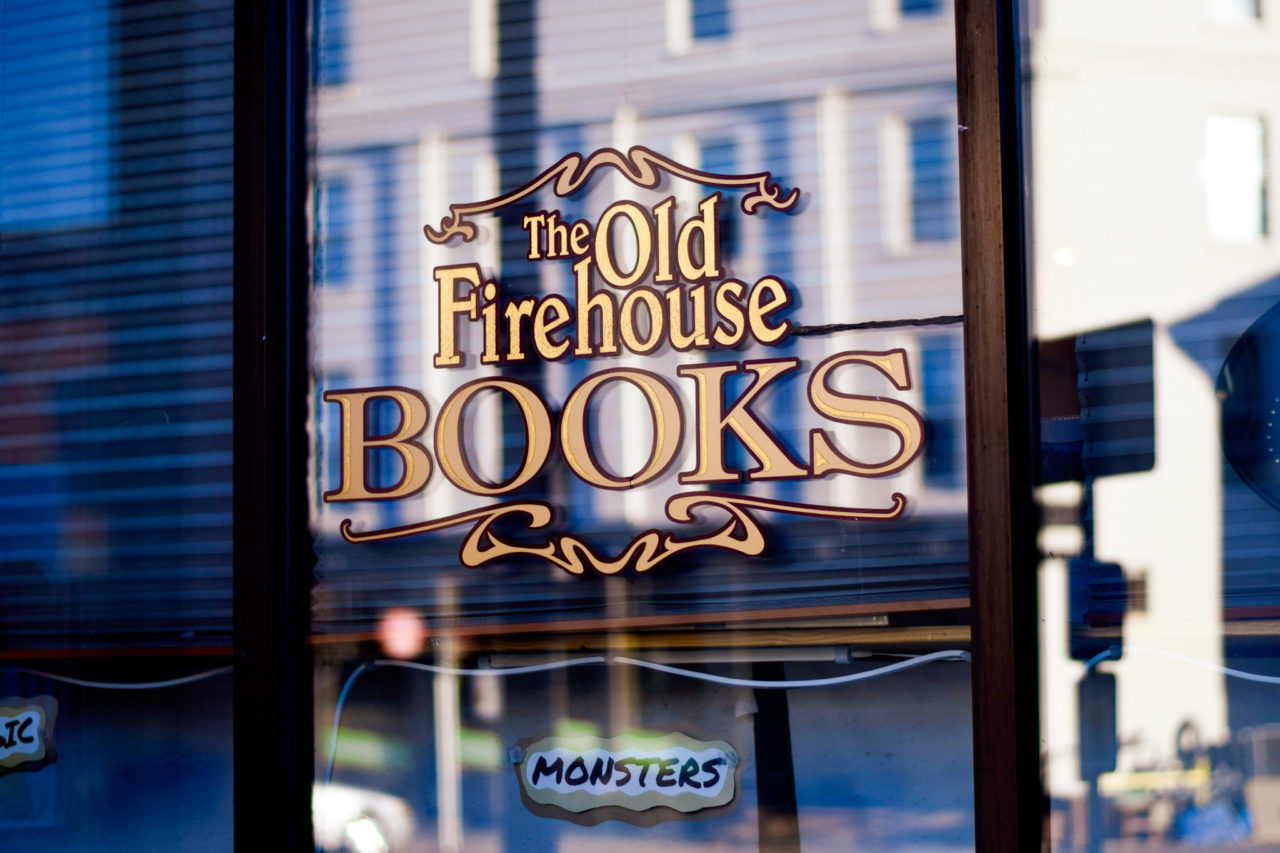

Typically, downtown Fort Collins shops generate twice as much retail activity per square foot, according to Birks. Why? It’s a destination for restaurants, entertainment, beer and so on. People want to interact and shop. People want a shopping experience.
“It’s a one-stop location for anything and everything,” says Kroeger. Franchises, small retailers and independent coffee houses nestle amongst chains—they all complement each other. It’s a great place to stroll and window shop. Even as the big shopping malls struggle, Birks says the downtown stores, “Punch out of their weight class.”
Sean Hawkins, Loveland Downtown District’s executive director, says shopping has become more personal. “Business owners are finding unique ways to connect with customers,” he says. “They need to know: What do you want to see here in the store, or they won’t be in business. Engagement is critical.”


A year ago, who knew? Now, it’s even harder to see what may lay ahead for retail. But because of its easy and efficient options, buying online will continue.
“It’s naïve to think consumer behaviors will return back to normal,” says Birks. He says businesses will essentially need to, “right-size both online and in-person presences.”
Hawkins agrees, “The future holds less square footage devoted to stores.” Rent is expensive. And inventory takes up space…it needs to sell.
Retailers have learned a lesson or two, and some ideas they’re keeping because they just make sense. With the ease of curbside pick-up and delivery options, many customers appreciate the new services. Augustine’s shoe customers, especially the elderly, love the delivery service. Since Brown’s Shoes has successfully flexed their business since 1963, they understand change is inevitable.
Moving forward, to keep customers engaged with in-person shopping, employees will need to be more educated on products. Pre-COVID, stores got away from clerks and cashiers explaining features. Now customers expect employees to have a working knowledge of their merchandise. Or else, why bother? Online is just a click away.
And those Dansko sandals? Size8 ½, in red? They were on sale at Brown’s Shoes. And damn, after getting fit by Augustine, they’re comfy.
